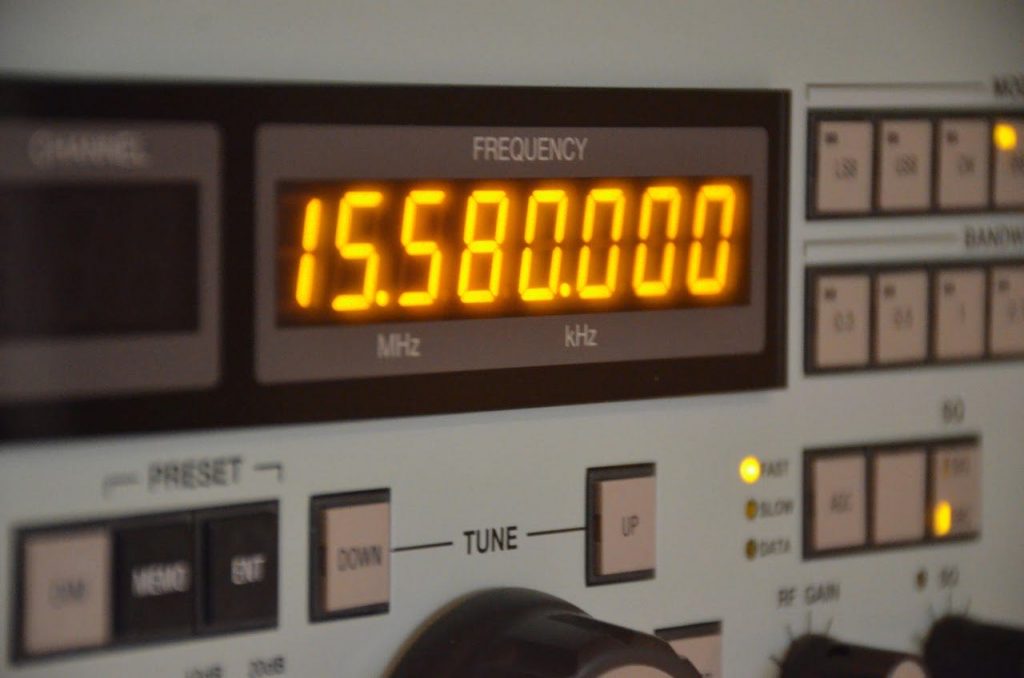Radio Waves: Stories Making Waves in the World of Radio
Because I keep my ear to the waves, as well as receive many tips from others who do the same, I find myself privy to radio-related stories that might interest SWLing Post readers. To that end: Welcome to the SWLing Post’sRadio Waves, a collection of links to interesting stories making waves in the world of radio. Enjoy!
Many thanks to SWLing Post contributors, Marty, David Korchin, and Paul Evans for the following tips:
Kumu Networks Launches an Analog Radio Module That Cancels Its Own Interference (IEEE Spectrum)
It’s a problem as old as radio: Radios cannot send and receive signals at the same time on the same frequency. Or to be more accurate, whenever they do, any signals they receive are drowned out by the strength of their transmissions.
Being able to send and receive signals simultaneously—a technique called full duplex—would make for far more efficient use of our wireless spectrum, and make radio interference less of a headache. As it stands, wireless communications generally rely on frequency- and time-division duplexing techniques, which separate the send and receive signals based on either the frequency used or when they occur, respectively, to avoid interference.
Kumu Networks, based in Sunnyvale, Calif., is now selling an analog self-interference canceller that the company says can be easily installed in most any wireless system. The device is a plug-and-play component that cancels out the noise of a transmitter so that a radio can hear much quieter incoming signals. It’s not true full duplex, but it tackles one of radio’s biggest problems: Transmitted signals are much more powerful than received signals.[…]
This 40-Year-Old Transistor Changed the Communications Industry (IEEE Spectrum)
While working as an electronics engineer in 1977 at Fujitsu Laboratories in Atsugi, Japan, IEEE Life Fellow Takashi Mimura began researching how to make the metal-oxide-semiconductor field-effect transistor quicker. The MOSFET, which had been invented in 1966, was the fastest transistor available at the time, but Mimura and other engineers wanted to make it even quicker by enhancing electron mobility—how speedily electrons could move through semiconducting material.
Mimura began to research an alternative semiconductor to the silicon used in the MOSFET, hoping it would be the solution. He came across an article in the Applied Physics Letters journal on heterojunction superlattices—structures of two or more semiconductors of significantly different bandgaps—developed by Bell Labs in Holmdel, N.J. The superlattices, which used a modulation-doping technique to spatially separate conduction electrons and their parent donor impurity atoms, inspired Mimura to create a new transistor.
In 1979 he invented the high-electron-mobility transistor. His HEMT used a heterojunction superlattice to enhance electron mobility, improving on speed and performance.
The invention now powers cellphones, satellite television receivers, and radar equipment.[…]
Why do resistors have a color code? (Hackaday)
One of the first things you learn in electronics is how to identify a resistor’s value. Through-hole resistors have color codes, and that’s generally where beginners begin. But why are they marked like this? Like red stop signs and yellow lines down the middle of the road, it just seems like it has always been that way when, in fact, it hasn’t.
Before the 1920s, components were marked any old way the manufacturer felt like marking them. Then in 1924, 50 radio manufacturers in Chicago formed a trade group. The idea was to share patents among the members. Almost immediately the name changed from “Associated Radio Manufacturers” to the “Radio Manufacturer’s Association” or RMA. There would be several more name changes over the years until finally, it became the EIA or the Electronic Industries Alliance. The EIA doesn’t actually exist anymore. It exploded into several specific divisions, but that’s another story.
This is the tale of how color bands made their way onto every through-hole resistor from every manufacturer in the world.[…]
Coming Soon to a Processor Near You: Atom-Thick Transistors? (IEEE Spectrum)
If there’s one thing about Moore’s Law that’s obvious to anyone, it’s that transistors have been made smaller and smaller as the years went on. Scientists and engineers have taken that trend to an almost absurd limit during the past decade, creating devices that are made of one-atom-thick layers of material.
The most famous of these materials is, of course, graphene, a hexagonal honeycomb-shaped sheet of carbon with outstanding conductivity for both heat and electricity, odd optical abilities, and incredible mechanical strength. But as a substance with which to make transistors, graphene hasn’t really delivered. With no natural bandgap—the property that makes a semiconductor a semiconductor—it’s just not built for the job.
Instead, scientists and engineers have been exploring the universe of transition metal dichalcogenides, which all have the chemical formula MX2.[…]
Border Officials Seek to Evict Defecating Vultures From Texas Radio Tower (NY Times)
Some 300 vomiting, defecating vultures have made a United States Customs and Border Protection radio tower in South Texas their home, coating the tower and buildings beneath it with potentially hazardous excrement as besieged border officials try to stem the deteriorating situation.
In a notice on Thursday, the agency said it was looking for advice on how to attach some sort of net on the 320-foot tower in Kingsville to keep the vultures from roosting and nesting on its “railings, catwalks, supports, and on rails and conduit throughout.”[…]

